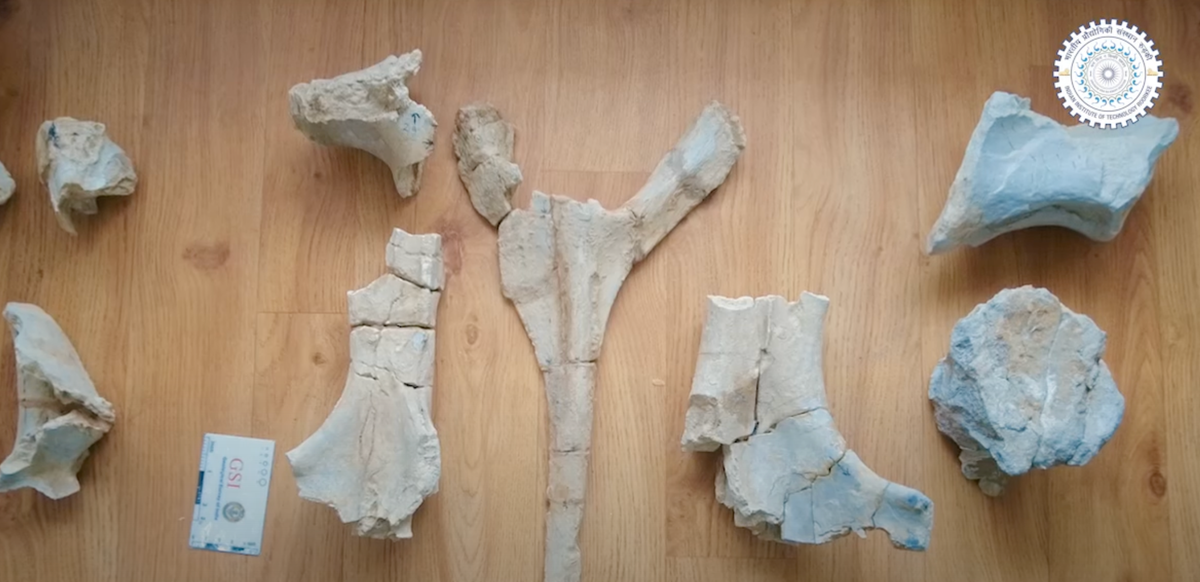
Fossils of the oldest long-necked dinosaur that inhabited Earth about 167 million years ago have been unearthed in India that reveal the country was a “major centre of dinosaur evolution”, experts said.
The discovery unearths some of the oldest plant-eating giant reptiles to have roamed the planet.
The dinosaur, named Tharosaurus indicus after India’s Thar desert, walked the planet during the Middle Jurassic period, according to a new study published in the journal Scientific Reports.
Researchers, including those from the Indian Institute of Technology (IIT) Roorkee and the Geological Survey of India dug up the fossil at a site near the city of Jaisalmer in the western state of Rajasthan – a region that was part of a shoreline along the prehistoric Tethys Ocean.
The new dinosaur was a member of the group known as dicraeosaurids that had long necks that fed on vegetation, according to the scientists.
It is also the first of this group of dinosaurs to have ever been found in India – and the oldest in the world.
“Prof. Sunil Bajpai and Debajit Dutta of IIT-Roorkee and Geological Survey of India have discovered the oldest fossil remains of a long-necked, plant-eating dicraeosaurid dinosaur in Jaisalmer, suggesting that India was a major centre of dinosaur evolution,” said IIT Roorkee in a post on X, formerly Twitter.
The discovery provides fresh insights into the diversity of sauropod dinosaurs in the prehistoric landmass, to which the Indian subcontinent was also a part at the time.
“Palaeobiogeographic considerations of Tharosaurus, seen in conjunction with the other Indian Jurassic sauropods, suggest that the new Indian taxon is a relic of a lineage that originated in India and underwent rapid dispersal across the rest of Pangaea,” scientists wrote in the study.
Other dinosaurs belonging to this group from the Middle Jurassic–Early Cretaceous periods have mostly been unearthed from Africa and South America as well as from sites in the US and China.
Researchers said the larger group of these dinosaurs, known as diplodocoids, all had long bodies and necks with spikes on the backs of their necks.
T indicus, they said, also slightly differed from others in its group with long depression on the side of its neck bones as well as neural spines, indicating it likely had unique spikes.
Scientists speculate the diplodocoid dinosaur group likely spread from, or may have originated in India, but added that this theory “still needs to be reconciled” with by comparing another Asian dinosaur group, the Lingwulong, from the Middle Jurassic period.
The new discovery, researchers said, also emphasises the need for increased sampling of older fossil sites in India in search of such ancestral dinosaur groups.







